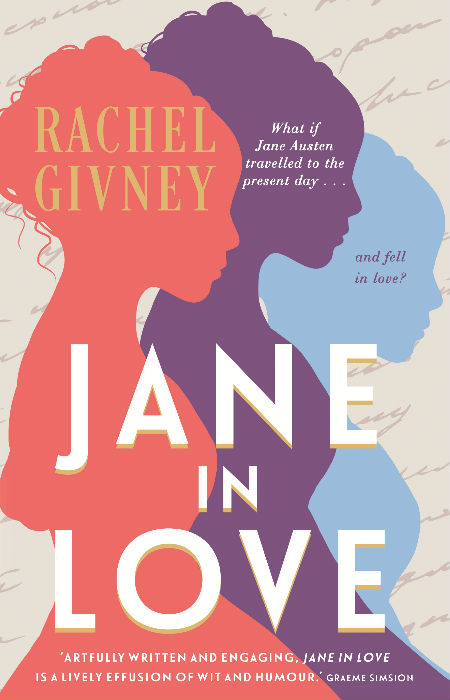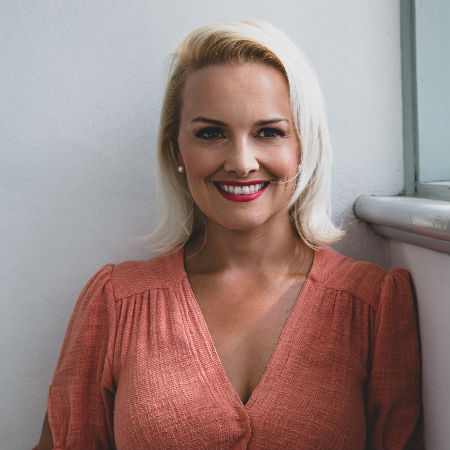
You might imagine that when it comes to a writer of Jane Austen’s towering and enduring fame that there must be almost nothing we don’t know about her.
But in fact, thanks to the destruction of letters between Austen and her sister Cassandra, for reasons unknown, and no doubt history’s propensity to favour the stories of famous men over their female counterparts, there are great gaps in our knowledge of what Jane thought, enjoyed and preferred in a host of a different areas.
That may be a problem for scholarly writers but for authors such as Rachel Givney, who is better known as a writer and filmmaker, it is a godsend, enabling the creation of a novel such as Jane in Love, which imagines, with considerable and greatly welcome artistic license, what might have happened to Jane Austen if she had been somehow transported to the 21st century.
It is a gloriously preposterous premise that may seem doomed to some half-baked, melodramatic telling but Givney infuses it with great humanity and emotional resonance that pivots around the idea that in order for us to do what we were born on this earth to do, there are some things that must, sadly, be sacrificed.
If you are a fan of the writer who gave us six novels and a number of other incomplete writings, you will no doubt be able to hazard a reasonably educated guess as to what those sacrifices might be.
Giveny however, writing with a sprightly buoyancy and a keen eye for engaging characterisation that delights at every turn, keeps you guessing right to the poignant end, infusing her unlikely tale with the kind of grounded insights into the human experience that you might not expect from what is, in many ways, a high-spirited time travel romp.
“The effort of willing new words from a blank page had the quality and consistency of torture. Jane knew the horror of painting oneself into a corner on the paper, and the ecstasy of escaping with no smudges made on the floor. She smiled at the speed at which the words entered her head. She laughed at how they fell to the paper and almost wrote themselves. She wondered how many more words waited. Inspiration like this came rarely. Her mind lapsed into a thought of Charles Withers, of what he might be doing. She surrendered the pages to the desk and climbed back into bed.” (P. 36)
Quite how Jane comes to be in the 21st century is best left to the highly-enjoyable set-up chapters of Jane in Love, which paint the author as a headstrong and excitable but troubled woman who is very much a square peg in the suffocatingly round hole that is early 19th century English society and who, though she wants love and marriage, is unwilling to give up things such as her precious writing to get it (writing is, according to her mother, something of which a young lady should not be a part).
Givney brings forth, with a real appreciation of a true writer can no more stop writing than breathing, how agonised Jane is over the unpalatable choice she before her – give up writing and become a “proper” lady or continue with the craft and face of penury when her parents are no longer around to support her.
When events overtake her and she finds herself wholly unable to handle to pressures to find a good marital match, a situation exacerbated by her, at the time, advanced age of 28 (once she reaches 30, she is officially an old maid and off the shelf as marriage material), she makes a deal with a mysterious woman in London and finds herself in modern-day England, where she becomes friends, eventually anyway, with brother and sister Fred and Sofia who live in contemporary Bath, the town in which Jane’s family lived in 1803 when the novel’s events take place but which she never really loved.
Sofia, a major Hollywood star with considerable romantic and professional issues of her own, is in town to film an adaptation of Austen’s Northanger Abbey and finds, as anyone would, Austen’s claim that she is the writer out of her own time wholly impossible to believe.
As does Fred but as he & Sofia and Jane, who is bewildered and then beguiled by the iron planes in the sky and steam-less contraptions on rail and road, not to mention how images can be displayed and watched in tiny metal boxes, get to know each other, the willingness to accept that she is who she says she is grows.

Refreshingly, Givney renders this transition from outright scepticism to wholehearted acceptance in the most believable terms possible, a heady achievement given how hard it would be to believe such an outlandish tale.
But as Jane sticks resolutely to who she is – she has no choice but to do this as she is in fact the real deal and not an actress hired to punk Sofia(as she believes at first) on the set of her new movie where she is vying with a scheming ingenue on the rise – it becomes apparent to Sofia that Austen is who she says she is and that she needs help returning home.
The only problem with this?
It’s not simply that reversing time travel is not the easier thing in the world but that the longer Jane stays with Fred, the more he and she fall headlong in love, something Jane has long desired and which, once it arrives, throws an almighty spanner in the works.
But with Jane no longer in the nineteenth century to write the works for which she is justly famous, and her books disappearing one by one, there is a very real possibility the celebrated author might find love but lose herself in the process.
It is a fiendishly complicated conundrum, one that Givney explores with real spirit and heart, as Austen asks herself what she wants more – love or her writing?
“Besides, what harm could it do? Sofia had declared that any sort of investigation on Jane’s part into the twenty-first century would make her fall in love with it and then change the course of history, but this motion bore further scrutiny. Not every object in their future world posed a danger to Jane’s existence, surely; a simple tour of the house to prevent her descending into boredom-induced madness could not hurt. Jane promised herself not to observe too much.” (P. 204)
That may sound like a heartless or narcissistic dilemma but in Givney’s deft hands it is anything but with Jane in Love reading like a tale of impossible, very human choices, a reminder that while it is wonderful to think we can have everything in life, that is not always possible or even desirable.
Beautifully balancing rich imaginative speculation, the facts of Austen’s actual lived life and some sage commentary on what life was like for women of Austen’s time (and of often still an issue now in certain respects, Jane in Love is a heady idea with a substantial core that is fun to read while also profoundly moving you.
It is not, to use a word no doubt dear to Austen, mere frippery but a meaningful rumination on career versus love that though it possesses an out-there premise is as grounded and affecting as any novel.
You can’t help but love Austen, feel for her dilemma, adore how she connects deeply with Fred and Sofia and they with her, and appreciate how desperately difficult living life can be at times, not only when you are out of the normal time of your own but even when you are in the right place at the right time.
Jane in Love is delightfully, happily and movingly masterful – a novel that pivots on an outlandish idea with such dexterity and heart and good humour that you wish you could stay in the company of Jane Austen and her newfound friends forever, a sentiment shared by all the characters who find great happiness and sadness all in one during the events of the book, realising with great poignancy by the novel’s end that the impossibilities of life can’t always be conquered and that we must make our peace with its many vagaries if we are to find any kind of lasting peace and happiness.